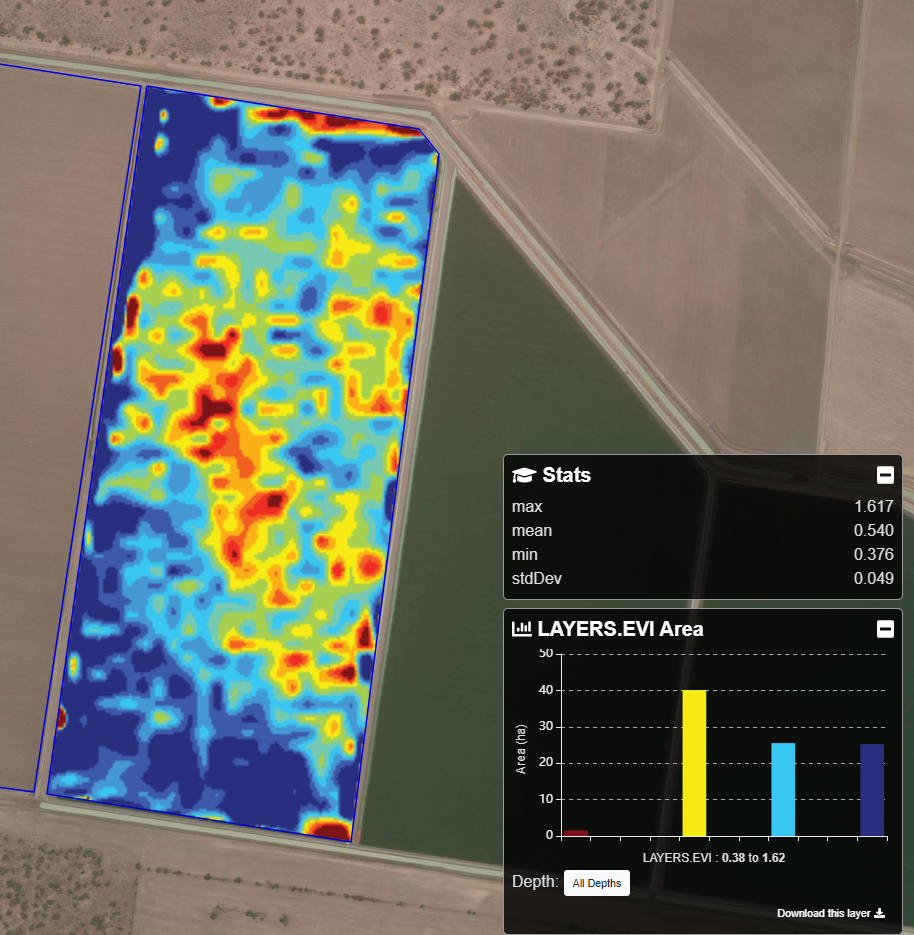Learn about the benefits and uses of EVI
The Enhanced Vegetation Index (EVI) is a remote sensing vegetation index that provides valuable information about the health and vigor of vegetation. It is an improvement over the traditional Normalized Difference Vegetation Index (NDVI) and is commonly used to assess plant growth, monitor vegetation stress, and evaluate crop productivity.

EVI takes into account atmospheric influences and corrects for the variations caused by factors such as aerosol scattering and the canopy background. This correction allows for more accurate assessments of vegetation conditions, particularly in areas with dense vegetation or challenging atmospheric conditions.
EVI values are derived from satellite or airborne sensors that capture data in the visible and near-infrared portions of the electromagnetic spectrum. The formula used to calculate EVI includes reflectance values from these spectral bands, along with coefficients that account for atmospheric influences.
By measuring the relative differences in reflectance, EVI provides insight into the density, abundance, and overall health of vegetation. It is particularly useful in detecting subtle changes in vegetation conditions, such as early signs of stress caused by factors like water shortage, nutrient deficiency, or disease.
Agronomists use EVI to monitor crop health and growth throughout the growing season. By comparing EVI values across time and space, they can identify areas of concern, make informed decisions regarding irrigation and nutrient management, and optimize crop production practices.
EVI is also valuable for large-scale monitoring of vegetation, such as assessing the impact of droughts, tracking changes in land cover, or evaluating the health of natural ecosystems. It provides objective and quantitative information about vegetation conditions, enabling agronomists and other experts to make data-driven decisions for sustainable land and resource management.
More information can be found at: https://en.wikipedia.org/wiki/Enhanced_vegetation_index
